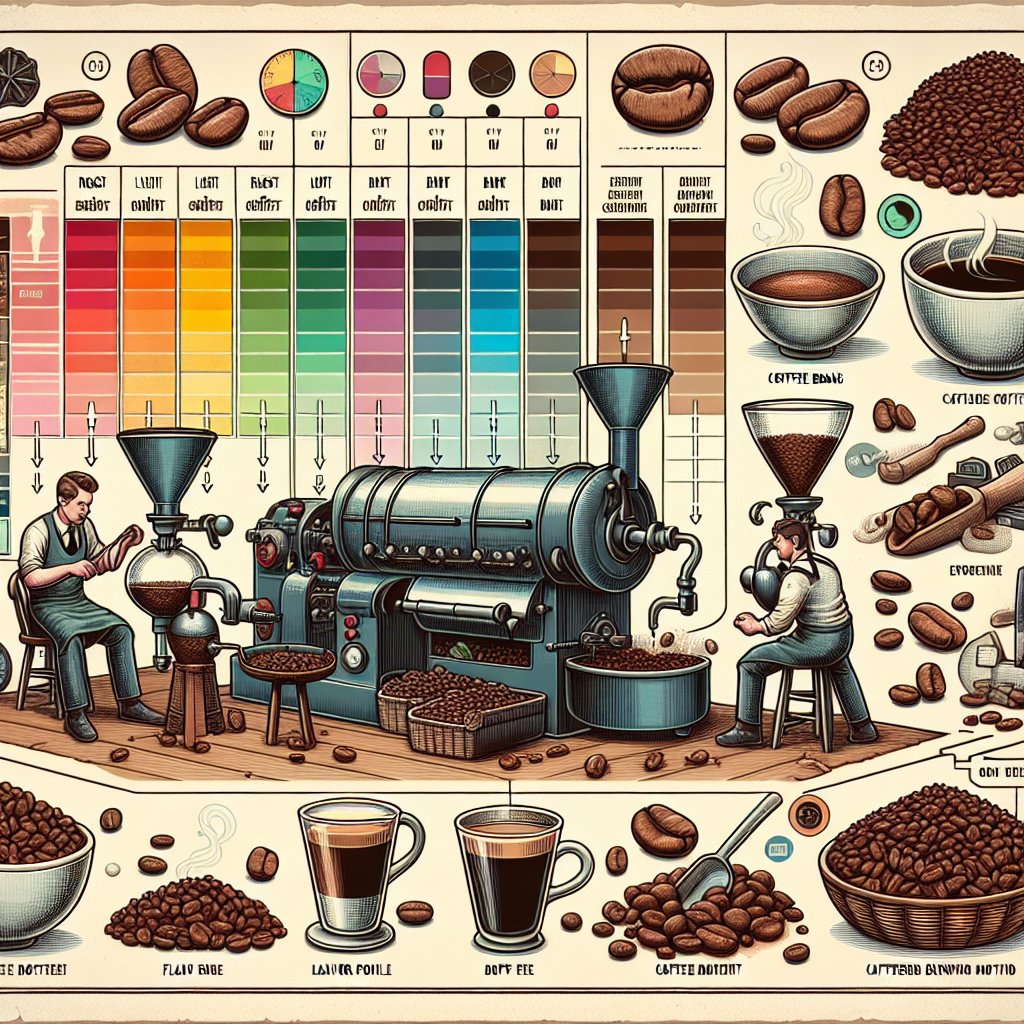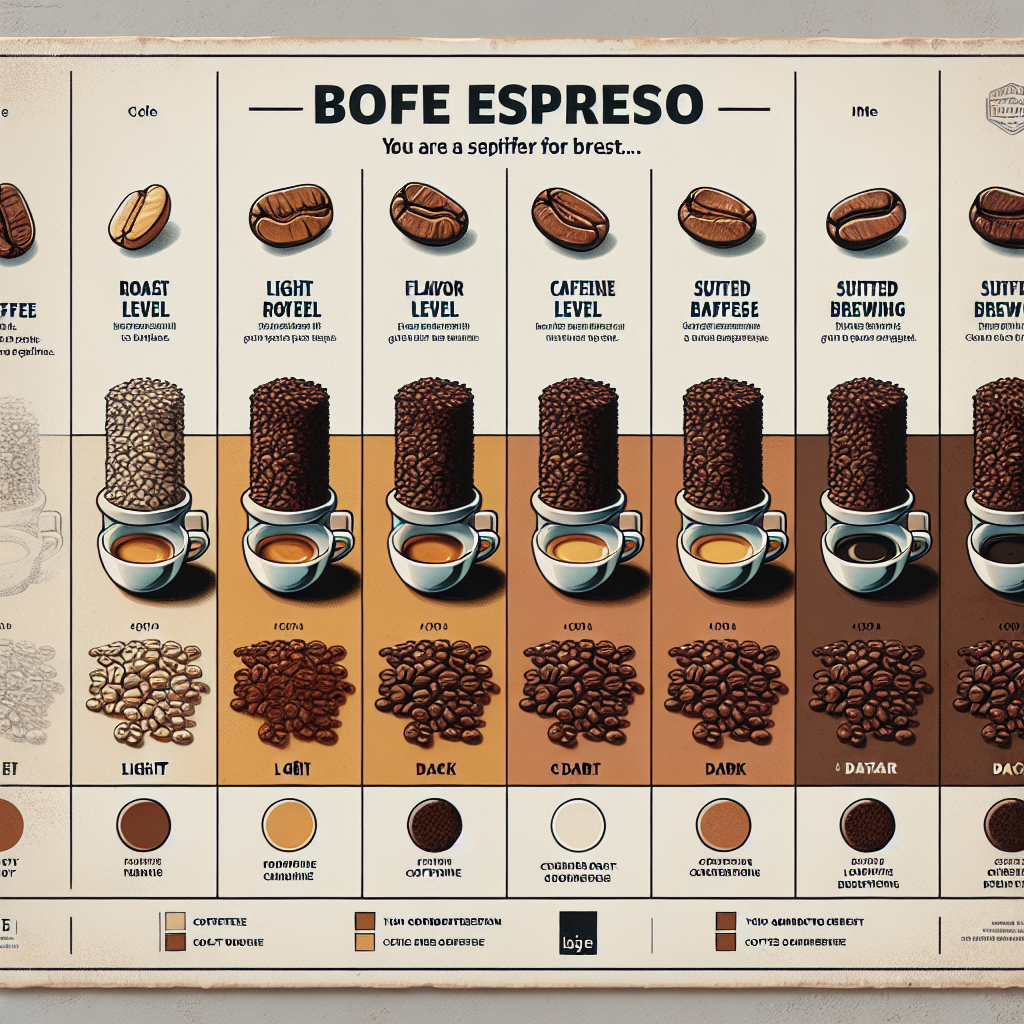So you’ve started experimenting with making your own espresso at home, and now you’re faced with the task of choosing the perfect roast for your espresso beans. With so many options available, it can be overwhelming to know where to begin. Fear not, because we’re here to guide you through the process and help you find the ideal roast that will bring out the best flavors in your cup of joe. Whether you prefer a rich and bold espresso or a lighter and more delicate taste, we’ve got you covered. Get ready to elevate your coffee experience to a whole new level!
Factors to Consider
When it comes to choosing the perfect roast for your espresso beans, there are several factors to consider that can greatly impact the taste and overall enjoyment of your coffee. From understanding your own personal taste preferences to the roast level and bean origin, each factor plays a crucial role in creating your ideal espresso experience. Additionally, the blend or single origin option and the roast date are important considerations to ensure you have the freshest roast possible.
Taste Preference
Understanding your own palate is the first step in choosing the perfect roast for your espresso beans. Every individual has their own unique taste preferences, and this applies to coffee as well. Some people enjoy a bold and intense flavor, while others prefer a more subtle and nuanced taste. By understanding your own preferences, you can navigate the world of espresso roasts with ease.
Identifying the desired flavors is another important aspect of choosing the perfect roast. Different roasts bring out different flavors in the coffee beans, and it is crucial to identify the specific flavors you enjoy the most. Whether it is the bright acidity of a citrus note or the smooth chocolate undertones, knowing what flavors you crave will help you narrow down your options.
Finding a roast profile that matches your taste preferences is the final step. Each roast level has its own unique characteristics, from light and bright to dark and bold. Experimenting with different roast profiles will give you a better understanding of what you enjoy most in your espresso, allowing you to choose the perfect roast every time.

Roast Level
Understanding roast levels is essential in choosing the right espresso beans for your preferred taste profile. Roast levels refer to the degree of roasting the coffee beans undergo, which greatly impacts their flavor, aroma, and body. There are three main roast levels to consider: light, medium, and dark.
A light roast is typically characterized by its light brown color and delicate flavors. Lightly roasted beans retain more of their natural acidity and fruitiness, producing a crisp and clean cup of espresso. If you prefer a brighter and more vibrant taste, a light roast may be the perfect choice for you.
Medium roast beans are roasted to a medium-brown color and strike a balance between acidity and sweetness. This roast level brings out a richer flavor profile, with notes of chocolate and caramel. If you enjoy a smooth and well-rounded cup of espresso, a medium roast is a great option to consider.
For those who prefer a strong and bold flavor, a dark roast is the way to go. Dark roast beans are roasted until they reach a dark brown, almost black color. This roast level creates intense flavors with smoky and bittersweet notes, along with a full-bodied texture. If you crave a robust and powerful espresso, a dark roast is the perfect match for you.
Bean Origin
The origin of the coffee beans is another important factor to consider when choosing the perfect roast for your espresso. The location where the beans are grown greatly influences their flavor profiles, as different regions have varying climates, altitudes, and soil conditions. There are two main types of bean origin to explore: single origin beans and blended beans.
Single origin beans come from a specific region or country, allowing for a unique and distinct flavor profile. These beans showcase the characteristics of their origin, whether it’s the fruity and floral notes of beans from Ethiopia or the nutty and chocolatey flavors of beans from Colombia. If you appreciate the nuances of different coffee-growing regions, single origin beans are a great choice.
On the other hand, blended beans combine different beans from various origins to create a balanced and consistent flavor. Blends are often crafted to achieve a specific taste profile, combining beans with different characteristics to create a harmonious cup of espresso. If you prefer a more well-rounded and consistent flavor experience, blended beans may be the better option for you.
Regional variations are also worth exploring when considering the origin of your espresso beans. Even within a single country, there can be different coffee-growing regions, each with its own distinct flavor profile. For example, Brazilian beans may have different characteristics depending on whether they come from the Sul de Minas or Cerrado region. Exploring regional variations can add an extra layer of complexity and enjoyment to your espresso experience.

Blend or Single Origin
The choice between a blend and single origin beans depends on your personal taste preferences and the flavor experience you seek. Both options have their own unique benefits and characteristics to consider, so it’s important to understand what you’re looking for in your espresso.
Blends offer a consistent and balanced flavor profile. They are carefully crafted by combining different beans to achieve a specific taste profile desired by the coffee roaster. Blends can offer a well-rounded cup of espresso with a harmonious balance of flavors. If you appreciate consistency and enjoy a balanced taste experience, a blend might be the right choice for you.
On the other hand, single origin beans provide the opportunity to explore the unique flavors of a specific region or country. Single origin beans allow you to experience the distinct characteristics of a particular coffee-growing region, showcasing its terroir in your cup of espresso. If you enjoy discovering new and unique flavor profiles, single origin beans will provide a more adventurous and diverse espresso experience.
Ultimately, the decision between blends and single origin beans comes down to personal preference. Experimenting with both options can help you determine which one suits your taste buds and coffee preferences the best.
Roast Date
The roast date of your espresso beans is a crucial factor in ensuring the freshness and quality of your coffee. Freshness matters when it comes to espresso, as stale beans can result in a lackluster and flavorless cup of coffee. When choosing the perfect roast, it’s important to consider the roast date to ensure you’re getting the freshest beans possible.
Optimal roast age refers to the window of time after the beans have been roasted where they are at their best in terms of flavor and aroma. The optimal roast age can vary depending on the roast profile and personal preferences. However, as a general guideline, most coffee experts recommend consuming the beans within two to four weeks after the roast date for optimal freshness and flavor.
Reading roast date labels is essential when purchasing espresso beans. Look for packaging that clearly displays the roast date, ensuring that you’re purchasing beans that have been recently roasted. Avoid purchasing beans with ambiguous or missing roast date labels, as it may indicate that the beans have been sitting on the shelf for a longer period of time.
In summary, choosing the perfect roast for your espresso beans involves considering various factors such as your taste preferences, the roast level, bean origin, blend or single origin, roast date, and even storage considerations. By understanding these factors and experimenting with different options, you can discover the ideal combination of flavors, aromas, and body that tickle your taste buds and provide the perfect cup of espresso every time. So go ahead, explore the world of espresso roasts, and enjoy the journey of finding your perfect roast.

